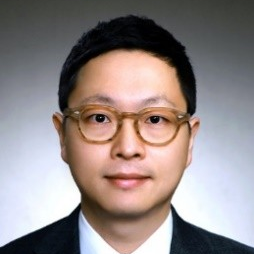Innovative Water Treatment Technology for Sustainability
A special issue of Applied Sciences (ISSN 2076-3417). This special issue belongs to the section "Environmental Sciences".
Deadline for manuscript submissions: closed (15 December 2020) | Viewed by 32135
Related Special Issue: Innovative Water Treatment Technology for Sustainability, Volume II
Special Issue Editors
Interests: environmental nanotechnology; functional nanomaterials; advanced oxidation processes; water treatment
Special Issues, Collections and Topics in MDPI journals
Interests: integrated watershed management; ecological engineering; waste-to-resource technology; emerging contaminants
Special Issue Information
Dear Colleagues,
In the last two decades, worldwide accessibility to safe water has dramatically improved. However, water pollution issues are still common not only in developing countries but also in developed countries. Especially in many developing countries, people consume unsafe drinking water often containing pathogens, mainly due to insufficient control or management of water and sewerage. Simply, they cannot afford to build infrastructure to manage them.
On the other hand, developed countries, which have good infrastructure to control disease-causing microbes, are facing new contaminants emerging from industrialization or urbanization, for example: pharmaceuticals, perfluorinated compounds, plasticizers, and microplastics. For some pollutants, only few environmental or health risks are known.
We now agree that we need to address these issues encountered both by developing and developed countries to achieve a sustainable water environment for mankind. Thus, this Special Issue plans to explore innovative water treatment technologies that can address water pollution issues for both developing and developed countries in a cost-effective way.
This Special Issue collects original research and critical reviews about scientific and technical information. The primary areas of interest of this Special Issue include but are not limited to:
(1) cost-effective water treatment technologies for rural areas that can be easily implemented in developing countries, such as wetland technologies, on-site treatment technologies, and so on;
(2) water treatment technologies for urban areas that can address contaminants of emerging concern, such as membrane technologies and advanced oxidation processes; and
(3) sustainable water and wastewater policies.
Prof. Yeojoon Yoon
Dr. Ingyu Lee
Guest Editors
Manuscript Submission Information
Manuscripts should be submitted online at www.mdpi.com by registering and logging in to this website. Once you are registered, click here to go to the submission form. Manuscripts can be submitted until the deadline. All submissions that pass pre-check are peer-reviewed. Accepted papers will be published continuously in the journal (as soon as accepted) and will be listed together on the special issue website. Research articles, review articles as well as short communications are invited. For planned papers, a title and short abstract (about 100 words) can be sent to the Editorial Office for announcement on this website.
Submitted manuscripts should not have been published previously, nor be under consideration for publication elsewhere (except conference proceedings papers). All manuscripts are thoroughly refereed through a single-blind peer-review process. A guide for authors and other relevant information for submission of manuscripts is available on the Instructions for Authors page. Applied Sciences is an international peer-reviewed open access semimonthly journal published by MDPI.
Please visit the Instructions for Authors page before submitting a manuscript. The Article Processing Charge (APC) for publication in this open access journal is 2400 CHF (Swiss Francs). Submitted papers should be well formatted and use good English. Authors may use MDPI's English editing service prior to publication or during author revisions.
Keywords
- water purification
- wastewater treatment
- water reuse
- desalination
- sustainability






